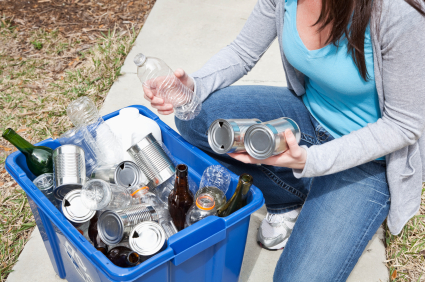We all experience stress in our lives, and some days it can be a little overwhelming. If you find yourself feeling stressed out now or soon, don't worry, we're in your corner. Check out the 10 ways below to beat stress by instantly boosting your energy!

1. Breathe deeply.
Sit down and close your eyes. Take a deep breath in and out of your nostrils. If you follow your breath with your attention, you can slow your thoughts and mind down. Breathing deeply brings more oxygen into your cells, flushing your brain and body with instant energy. Think of this as a simple, yet very powerful and effective form of meditation.
2. Stretch yourself happy.
Stretch your body slowly with gentleness, kindness and love. With each stretching movement you make, celebrate your body: Notice your wrists, your arms, your neck, your spine, your legs, your ankles and your knees. Bring attention to your neck by dropping your left ear towards your left shoulder, then releasing your right ear towards your right shoulder until you find space opening up in your neck and upper shoulder area. Repeat the stretch a few times then drop your chin down to your chest.
3. Treat yourself with self-massage.
When you're mentally and emotionally stressed, that stress is also being held in your physical body. It can be helpful to release this tightness using self-massage. Begin by gently massaging your body with your fingertips and hands. Typically the body parts most affected by stress are the back, shoulders, legs, arms, face, eyes and jaw. Start massaging these parts of your body to help you identify where stress lives in your body.
4. Smile a big smile.
Start with a tiny smile, then let your smile spread widely across your face. Smile the biggest smile you can! Notice how your body responds. Feel your eyes smiling and all the muscles in your face smiling. Breathe this big happy smile all the way into your center. Close your eyes and drink in this new state: the relaxed, happy and peaceful feeling. Feel yourself feeling happy, grounded and centered.
5. Give yourself a vitamin D boost.
Get a natural vitamin D injection by sitting in the sunshine for a few minutes. Feel the warmth of the sunshine, naturally dissolving away stress, tension and tightness in your body and in your life.
6. Inspire yourself.
An easy way to inspire yourself is to surround yourself with positive support, inspiration and motivation. Watch an inspiring video, read an uplifting story or listen to a motivating speech. Another idea is to reconnect with a positive person who inspires you. Notice that it's very hard (if not impossible!) to feel stressed and inspired both at the same time. So, keep yourself tuned in to your inspirational stories, videos and audios until the stress releases.
7. Play your favorite music.
When you listen to your favorite music, something magical happens. Let yourself move and sing to your favorite songs. Music has an amazing ability to help reconnect you back to yourself, allowing healing to happen easily, naturally and effortlessly. Get into a nice comfortable place, perhaps sitting or lying down, and put on your favorite music and just Imagine your stress melting away, just melting, melting, melting.
8. Do some circle work.
Slowly, with intention, roll your shoulders back and down in a slow, circular motion. Slow everything down and notice how your breath deepens naturally. Feel the spaciousness in your body expand, particularly around your shoulders, chest and heart area as you do this. Consciously imagine opening up even more into this area of your body. Bring your shoulders back into a neutral place, then repeat another five times (more if you have the time and desire). With each shoulder circle that you do, imagine your stress just releasing naturally out of your body.
9. Laugh out loud.
When you laugh out loud, good vibes are able to move through your body, flushing away old energy blocks, along with feelings of stress and frustrations. Your inner child likes nothing more than having fun, so this is a perfect excuse to watch that comedy you've been wanting to see or get together with a good friend who makes you laugh. With each time that you laugh, just imagine laughing at your stress and sending it far, far away. Let the healing vibrations of your laughter move fluidly through your body, transforming stress into pure joy, positivity and optimism.
10. Make your favorite smoothie.
And, if you’ve tried all of these ideas and are still looking for more inspiration to feel better, there's nothing like getting in the kitchen and creating a delicious and healthy smoothie. This is a surefire way to relieve stress and make yourself feel good again! Here’s one of my favorite smoothie recipes: In a high-speed blender, blend 1-2 frozen bananas, 1 1/2 cups chilled, non-dairy milk (or equivalent freshly squeezed juice/water), a generous handful of frozen berries and 1 teaspoon each of cinnamon and pure vanilla essence. Blend together and when thoroughly mixed, pour into a lush cocktail glass and decorate with fresh berries on top. Sip and enjoy ... Mmm!
It's possible to relieve stress naturally. Stress really can be an energy thief, one that robs you of your precious life force, but you don’t have to let it be so.
Connecting with your inner wisdom and strength will help you to naturally transform your stress into new energy, courage and confidence so that you can feel better instantly!
Full article here: http://bit.ly/11Rn3xF








